Written by: Wallace Merriman
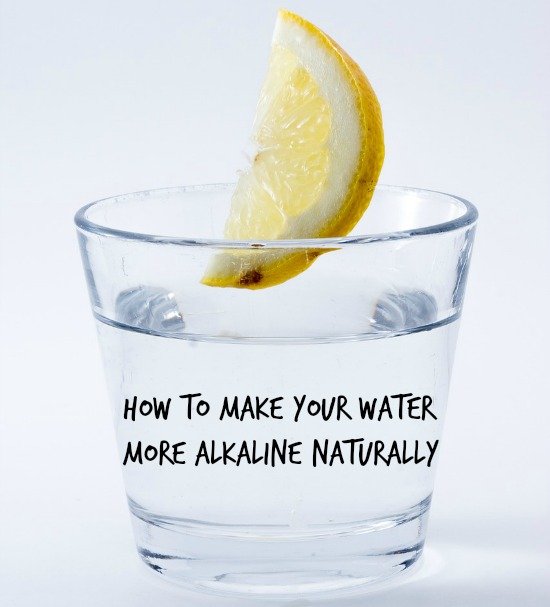
The pH level of our drinking water can often be an aspect of our health that we easily overlook. With focus on fad diets and workout regimes, the thought of improving our drinking water usually falls at the bottom of our priority list, or isn’t addressed at all. Paying better attention to the pH levels in our drinking water can help the overall balance of our bodies.
By alkalizing our water, we can easily contribute to our health by improving our metabolism, lowering the acidity in our bloodstream, slowing the progressions of aging down, and kick-starting our body’s full potential by lowering its overall acidity. The pH levels of our water can tear down our bodies from the inside out if we don’t’ pay close attention. Learning how to make alkaline water is an easy process, and the possible health benefits will be worth the extra step we put towards our drinking water.
However, there are some who claim that alkalized H2O created from man-made mechanisms in our kitchens aren’t giving us the benefits naturally occurring alkaline H2O gives us. It’s important to criticize studies funded by products, and ingesting it in our own bodily system is the only true way we can know for certain whether we need to alkalize our drinking water.
In this guide, we can find five different ways of alkalizing H2O. Two of them are more natural, using ingredients you can easily find in your home: baking soda and lemons. One is neutral, with barely any debates on its use in making water alkaline: pH drops. The other two methods have been criticized by doctors, and debates can still be found surrounding opposing claims: water ionizer and reverse osmosis filter.
What is alkaline water?
Water can either be acidic or alkaline, depending on its pH level. “pH” stands for “potential hydrogen” or “power of hydrogen” and refers to the amount of hydrogen ions contained within the substance. In H2O, they then attach to the water molecules to create hydronium ions: H3O. The more hydrogen, or hydronium ions, contained within the substance, the more acidic it becomes.
Generally, water has a pH level of 7 (which is neutral) or 8 on the pH scale of 1-12. Acidic substances have pH levels between 1-6 while alkaline substances have pH levels between 8-12. To give you a better understanding of what substances are acidic and which ones are alkaline, regard the following scale:
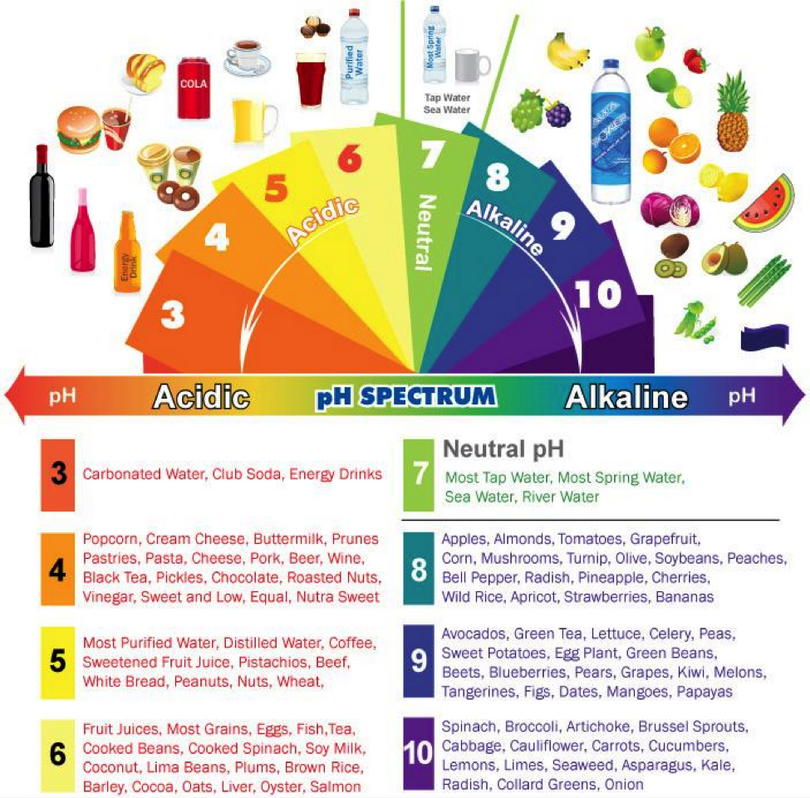
Though tap water leaving water plants usually has a pH level ranging from 6.5-8, it often changes when traveling through pipelines to our homes. Tap water can become increasingly acidic and pull metals from the pipes which aren’t healthy for consumption. If we drink water from the tap, it would be ideal to filter it and/or make our water alkaline.
By filtering our water, we keep out the metals that can weigh us down in our stomach, making us feel fuller, as well as keeping out contaminants from our bloodstream. However, by alkalizing our water, we make the substance less acidic. When we alkalize our water, it doesn’t mean the contaminants have been removed. Therefore, keep in mind the best type of alkalized water is made with filtered or bottled water.
A great way to find out the pH level of our water is by purchasing pH strips which can often be found in stores that sell items for pools and/or hot tubs. Several online stores also carry them if you type in “buy pH strips online” into a search engine. There is a method of creating our own pH strips at home, by using a cabbage. Cut or chop a red cabbage into small enough pieces to fit in a blender, then blend with a very slight amount of water to get the juice out.
Microwave the cabbage and its juice until it boils/steams. Now, dip either a coffee filter or filter paper into the juice, assuring it’s soaked through and dark. Let it dry, then cut the paper up into strips. It’s important to test the strips with vinegar and baking soda or other known acids and alkaline to see what the color transitions are for your specific pH paper. Once this is known, you’re ready to use your made-at-home pH strips on unknowns.
Why make water alkaline?
Now that we know what it is, why should we care if our water is alkaline or not? There have been various debates over whether or not it actually offers us health benefits, but one thing is certain. As our diets consist of more and more of processed foods and animal proteins, it’s more likely that the overall pH level of our bodies is steadily changing. To neutralize the effects, alkalizing our water could be the solution.
Mayo Clinic explains that making our water alkaline could help with bone density loss, since acidic substances traveling through your bloodstream pull at minerals, i.e., the calcium your bones. Though there haven’t been enough experiments testing this hypothesis, individual cases have been reported and offer us insight into this theory.
When to make water alkaline?
To decide when we should make our water alkaline depends on what our motive is. If we believe the side of the debate which states there are multiple benefits to drinking water that’s been alkalized, then we can begin a regime of altering stages: drinking water that’s alkaline for a week, regular water for the next, alkaline next, etc. for as long as we’re willing to make it.
If we’re on the fence, still unsure whether making our water alkaline could possibly make us feel rejuvenated, but believe perhaps it could help with the acidity in our bloodstream or with bone loss, then the same regime is ideal. Instead of carrying on with the regime for a prolonged period of time, we can do it less frequently. We must decide for ourselves whether changing our water is right for our intake or not depending on our body’s needs, reactions to intake, and our beliefs.
Some alkalize their water to neutralize the acidity of their stomach and upper bowel specifically when the ache of heartburn threatens them. By reducing the acidity of our water, making it more alkaline, we thus can experience either immediate benefits or prolonged, depending on what your using it for and how your body responds.
What are the different methods?
There are various ways of making our water alkaline at home, some involving easy-to-find ingredients in your fridge or cupboard. Others are as simple as buying an alkaline kit at the store. However, some require that we wait a period of time before affirming the water has been alkalized.
Depending on how much we are willing to spend, and how quickly we want to be able to drink our alkalized water, will determine which method we choose. Below lists five divergent ways of creating it artificially in our home. Before determining which method to uptake, we must first decide if we want to make our water alkaline with either tap, filtered, or bottled water. Once we do this, we can conduct a test to see how alkaline or acidic the water is. Water that is too alkalized may have the reverse effects we’re looking for.
First, determine water pH
Remember the experiment you did in middle school that involved baking soda and vinegar? We had to place a pH strip into two solutions and watch what color they changed. The piece of paper we once submerged were pH strips – and this is the easiest known way to test your water’s pH level. They can be found at various stores, usually near the pool equipment and cleaning products. If you have the time and ingredients, pH strips can be made at home using cabbage and coffee filters.
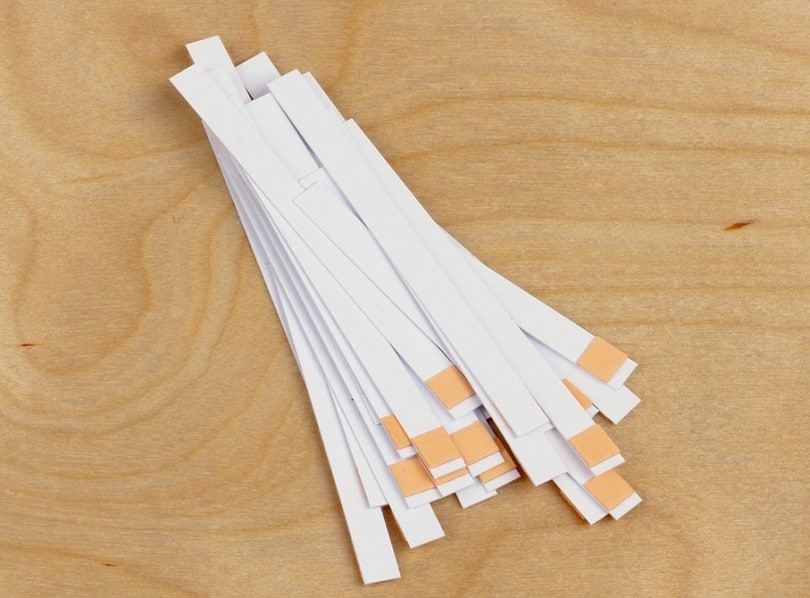
Remember, normal drinking water has a pH level of 7-8. We want to alkalize our water, pushing the pH to either 8.5 or 9. It’s best to use bottled or filtered water for better quality, but tap water is also an option.
Baking soda
One of the easiest ways to alkalize your water at home is by mixing it with baking soda. Baking soda, or sodium bicarbonate, is alkaline with a pH level of 9. For every gallon of water you wish to alkalize, mix it with a ½ tablespoon of baking soda. Shake the mixture vigorously until the baking soda dissolves completely. Once it has, our water is ready to drink. Baking soda out of the box should do the trick; however, some say baking the baking soda first increases its potential to turning the water alkaline.
This trick is also good for those of us seeking a quick fix to indigestion or heartburn. Don’t forget, creating making our water alkaline with baking soda increases your intake of sodium, so people with diabetes, kidney problems, or serious health conditions should talk to their doctor before using baking soda to make their water alkaline.
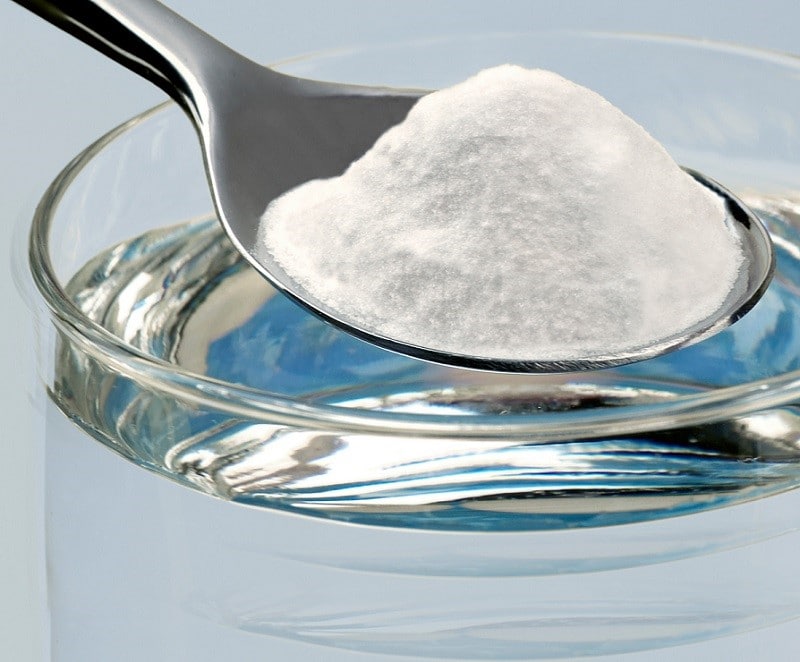
Lemons
Another easy trick to turning our water alkaline, is by adding lemons to it. It’s true that lemons are acidic, but they’re also anionic. As our body processes the lemon water, it alkalizes within us. When making a pitcher of lemon water, use one whole lemon and cut it up into eighths. It’s unnecessary to squeeze them, because you place all the pieces in the pitcher. Cover the pitcher, and allow the water to sit for 8-12 hours at room temperature. The best time to make this type of water is before bed, so it can sit overnight unbothered.
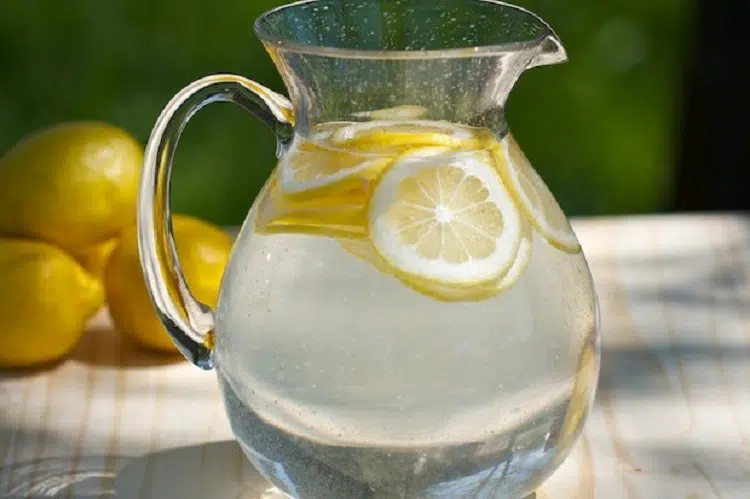
Once the allotted time is up, our water is ready to drink and also has a refreshing taste! Lemons not only help make water alkaline, but their potassium helps nourish our brains and their calcium helps strengthen our bones.
pH drops
One of the easiest ways with the least amount of steps towards making water alkaline is by using pH drops that can be found in stores. pH drops consist of highly concentrated alkaline minerals. The bottle purchased should have directions that tell us the proper amount of drops to use in order to alkalize specific amounts of water.
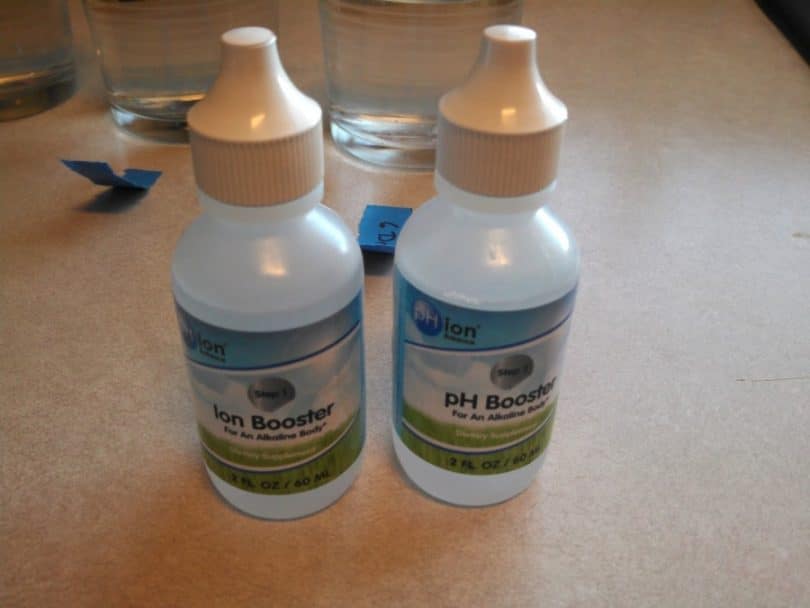
Once the right amount of drops are placed in the water, shake or stir it, and we should have alkalized drinking water. pH drops can easily be purchased online or in stores within their pharmacy. Of course, pH drops can be pricey, ranging anywhere from $6 to $20 dollars.
Water ionizer
If we’re looking for the convenience of drinking alkaline H2O easily at any given time, a water ionizer is a great way to do so. It attaches to your sink, and supplies you with two different kinds of water: ionized (alkaline) and oxidized (acidic). The H2O that’s alkaline is for either drinking or cooking.
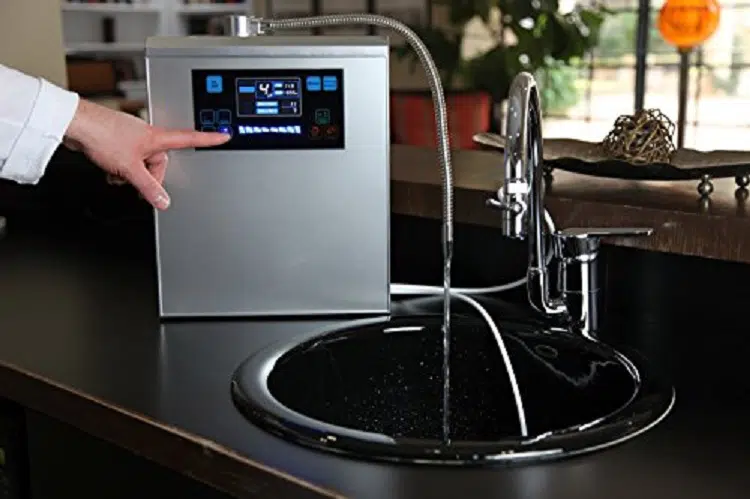
The oxidized H2O comes out of a separate hose, and is great to use as a sterilizing agent for cleaning dishes, washing hands, or using to bath in. The way a water ionizer works, is tap water first flows through activated charcoal to filter it. Next, it streams through an electrolysis chamber where positive ions gather at negative electrodes while anions gather at the positive electrodes using electricity.
This is called electrolysis, and the water is divided accordingly. Keep in mind a device like this will take up space on your counter unless professionally installed as your faucet and also produces acidic water.
Reverse Osmosis water filter
Like the water ionizer, a reverse osmosis water filter is also a mechanism that makes our water alkaline. It can connect to a faucet, or can be installed professionally in our home. These are ideal for those of us seeking both a highly effective water filter as well as making water alkaline. The way that this specific water filter works, is by using osmotic pressure and microscopic filter membranes that only allow hydrogen and oxygen to pass through them.
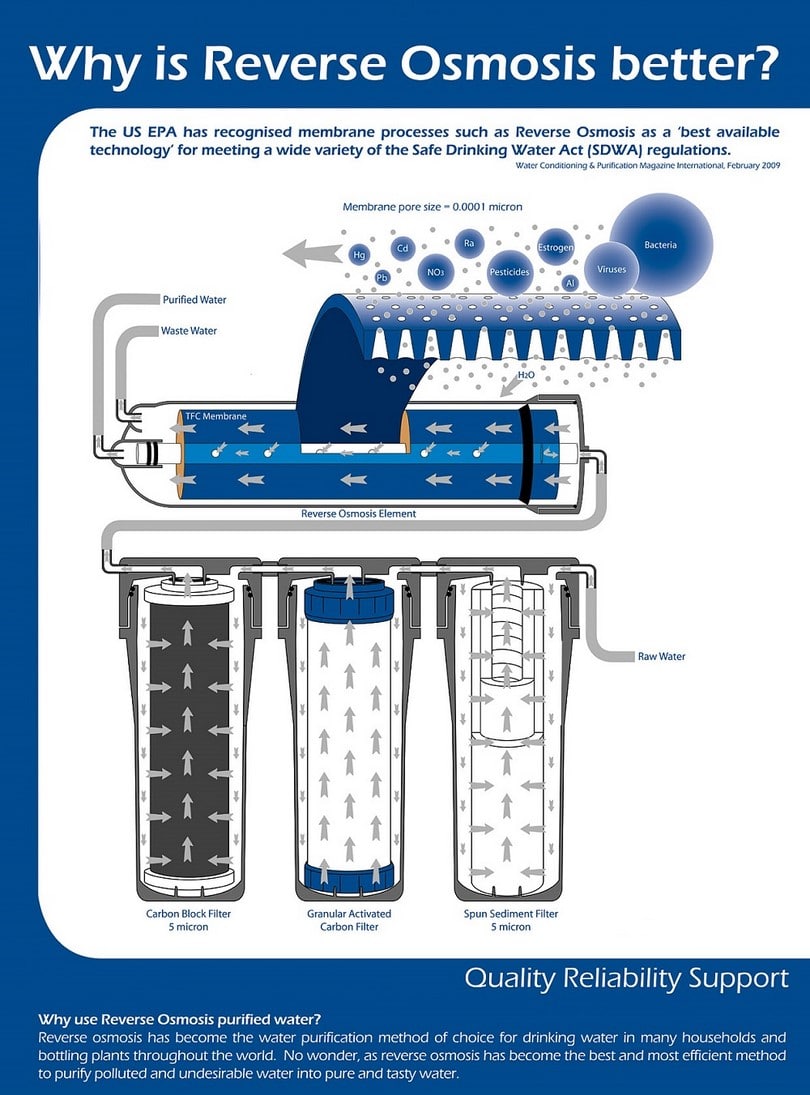
Water flows through this pressure system, against several membranes, and removes all types of contaminants. The water also flows through a carbon filter, removing any last odors or colors. Like the water ionizer, this filter system for alkaline water is on the more expensive side.
Can I consume too much?
There is the possibility we can accidentally alkaline our system too much, creating unpleasant side-effects as our body’s pH is thrown off balance. Included effects are hypertension, anxiety, bladder infections, and urinary tract infections. However, there is not enough empirical evidence to make an official statement, only records of patients with symptoms correlating with their intake of alkaline H2O.
Some suggest switching every other week from drinking normal tap or bottled water, to alkalized water is a healthy amount to ingest. Others claim that it depends on whether or not it’s natural or artificial – and that one can drink as much naturally occurring alkalized water as they wish. Still others state that the baking soda and lemon methods are acceptable, but man-made machines that use electricity to separate ions are not. The fact that “waste” or acidic water is created along with the ionized water is proof enough for some doctors that ionized water is bad for you.
Looking at the various claims of drinking what that’s increased in alkalinity, we can see the health benefits tend to outweigh the side-effects. This is especially so if we are able to make our water alkaline with either baking soda or lemons, two of the more natural, easiest, and least expensive ways to go about the process.
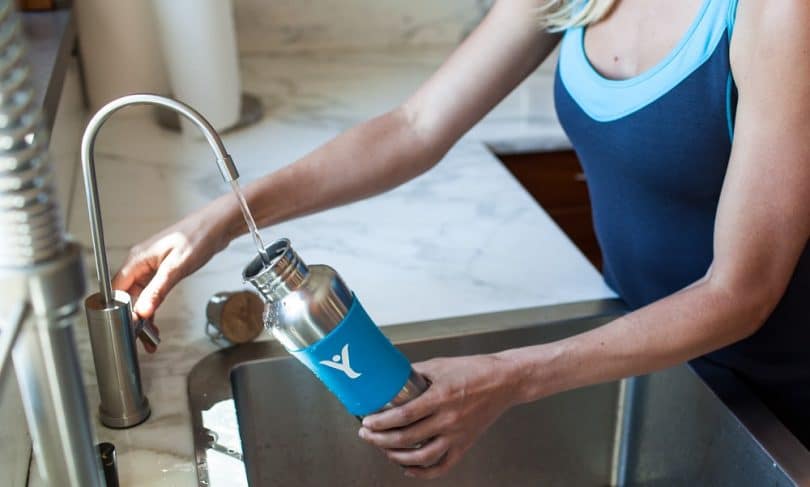
Whether we’re worried about losing our bone density due to our increasing intake of acidic substances, want a boost in our metabolism, wish to slow the process of aging, or simply want to kick-start our body’s full potential, alkalizing water ourselves is an easy route to improving our health.
Remember to consume it in stages to evaluate how much of it you need to feel revitalized. It’s possible the effects won’t be felt for a period of time as your body begins to process its new pH levels. Don’t dismay before the trial period you’ve set for yourself is over. Though, it’s a good idea to stop if you begin to experience any of the side-effects mentioned above.
New products and/or methods of alkalizing our water may surface in the future, so be wary of studies being done that simply support claims of the product funding them. It is our duty to get to know our own bodies, what they need, and what we should be consuming. This is especially so when it comes to the liquid each of us needs to live: the very H2O we drink.
Becoming more aware of our acidic intake, our body’s pH balance, and knowing how to neutralize it, will help us in both understanding the importance of alkaline water as well as our own bodies. To live a healthy life is imperative if we wish to carry on without aches and pains, even if we decide to alkalize our water for short periods at a time. Knowing how to make alkaline water ourselves will keep us from buying unnecessary mechanisms whose purposes are criticized and debated, all while maintaining a good hold on our health.
